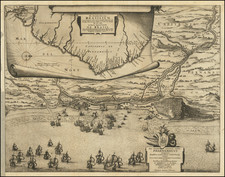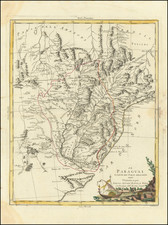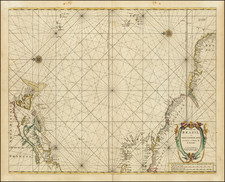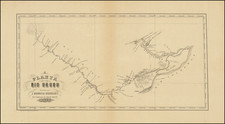Engraved folding map, with an inset map of the Brazilian coast at the top, and a naval battle around Olinda, Pernambuco, Brazil, at the bottom.
This map comes from a later abridgment of De Bry's "Grand Voyages."
Johann Ludwig Gottfried (c. 1584 - 1633)
Gottfried was a 17th-century German theologian, translator, author, and editor. For a long time, it was thought that Gottfried was merely a pseudonym for Johann Philipp Abelin (d. 1634), however, this has apparently been refuted. Gottfried's most extensive original work is the Gottfriedsche Chronicle.
Newe Welt und Americanische Historien [1655]
The present engraving comes from Johann Ludwig Gottfried's abridgment of De Bry. The illustrations from this work are after Theodor de Bry's and Matthaeus Merian's works in parts 1-12 of the "Grand Voyages". The first edition of the abridgment was published in 1631. The second edition was published by Merian's heirs in Frankfurt in 1655.
Theodor de Bry (1528-1598) was a prominent Flemish engraver and publisher best known for his engravings of the New World. Born in Liege, de Bry hailed from the portion of Flanders then controlled by Spain. The de Brys were a family of jewelers and engravers, and young Theodor was trained in those artisanal trades.
As a Lutheran, however, his life and livelihood were threatened when the Spanish Inquisition cracked down on non-Catholics. De Bry was banished and his goods seized in 1570. He fled to Strasbourg, where he studied under the Huguenot engraver Etienne Delaune. He also traveled to Antwerp, London, and Frankfurt, where he settled with his family.
In 1590, de Bry began to publish his Les Grands Voyages, which would eventually stretch to thirty volumes released by de Bry and his two sons. The volumes contained not only important engraved images of the New World, the first many had seen of the geographic novelties, but also several important maps. He also published a collection focused on India Orientalis. Les Grands Voyages was published in German, Latin, French, and English, extending de Bry’s fame and his view of the New World.
Mathaus Merian (1593-1650) was the father of engraver Matthäus the Younger, and of the painter, engraver, and naturalist Maria Sibylla Merian. He was born in Basel, Switzerland and trained in engraving in Zurich. After a time in Nancy, Paris and Strasbourg, he settled in Frankfurt. While there, he worked for Johann Theodor de Bry, the publisher and son of the travel writer. In 1617, he married Maria Magdalena de Bry, Johann Theodor’s daughter. In 1623, Merian took over the de Bry publishing house upon the death of his father-in-law. Merian’s best known works are detailed town views which, due to their accuracy and artistry, form a valuable record of European urban life in the first half of the sixteenth century











![Carte Du Paraguay . . . [showing Rio Janeiro, Buenos Aires, Salta, etc]](https://storage.googleapis.com/raremaps/img/small/101636.jpg)
![[ Ilha da Santa Catarina to Bombinhas ]](https://storage.googleapis.com/raremaps/img/small/59596.jpg)
![[ Peru, Ecuador and the Upper Amazon ] Maragnony sive Amazonum Fluminis Terrarum in Orbe Maximi quo ad Hispanicae Potestai subest Cursus cum Fluvys et Regionibus finitimis Utilitati Publicae probatissimis e Documentis accuratus novissime descriptus a quodam pereas provincias olim S.I. Missinario delineatus a Petro Parcar 1785](https://storage.googleapis.com/raremaps/img/small/89253.jpg)

